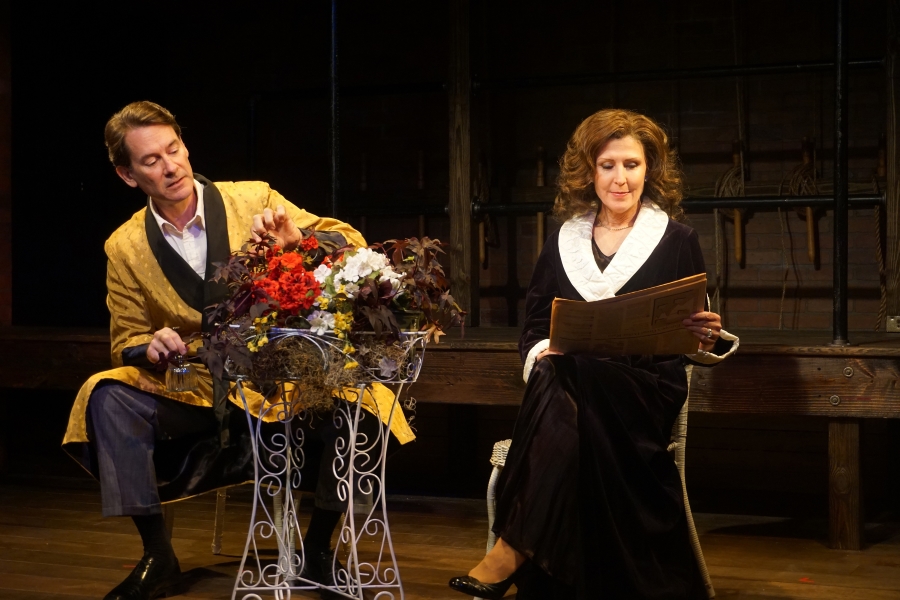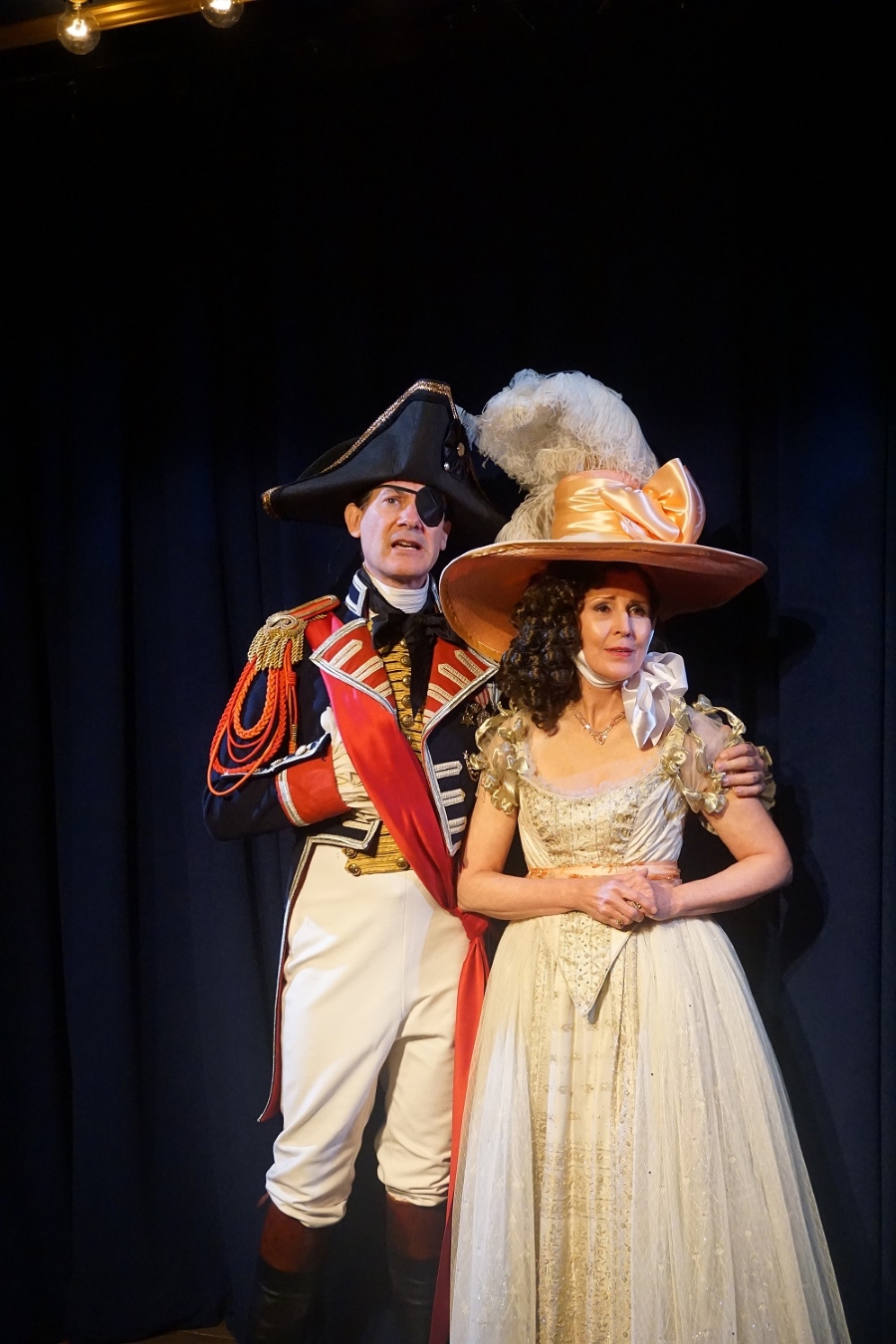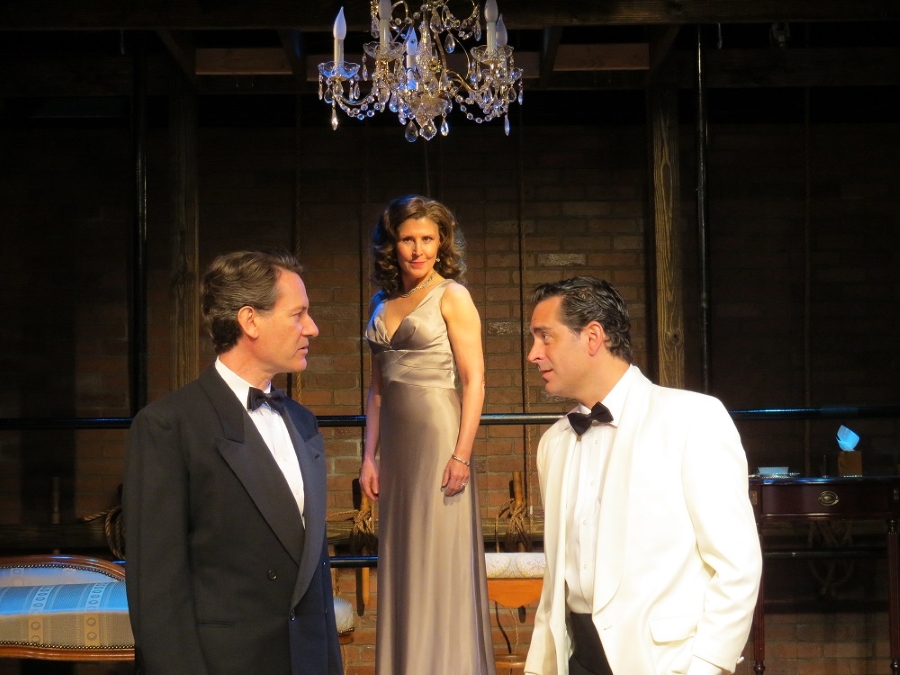Liza Vann, a longtime fan of playwright James McLure, was rereading his comedy Laundry and Bourbon in 2003 and wondered, “Why haven’t I seen a new Jim McLure play recently?” So she called up the playwright’s agent and learned that he was developing a new show called Iago at the Alabama Shakespeare Festival. Vann went to see the developmental reading, spent a weekend talking with the playwright about the play, and together they put together plans to bring the play to New York City—but a production never came to fruition.
After McLure’s death in 2011, Vann made it her mission to bring this under-produced play back to the stage, and now she’s playing the role of Vivacity in New Jersey Repertory Company‘s production, which runs Aug. 25–Sept. 25.
McLure’s play takes place from 1940 to 1957 and follows of troupe of actors rehearsing a production of Othello. The backstage story mirrors the intrigue, lust, and betrayal of Shakespeare’s tragedy, and adds another layer: The dramatic offstage plot reflects the real-life marriage of Laurence Olivier and Vivien Leigh and Leigh’s notorious love affair with Peter Finch.
In Iago, the strapping young character Peter Finney, who plays Iago, wins the heart of the actress, Vivacity, playing Desdemona. This spurs jealousy in Vivacity’s husband, Tony—who is, of course, portraying Othello. To round it out, the director in the mise-en-abyme is strikingly similar to Noël Coward. But audiences expecting a veiled bio-drama should know that the real-life inspiration for the characters is secondary in this production; the actors are bringing their own interpretations to the roles.

“It is kind of a neglected play,” says New Jersey Rep artistic director SuzAnne Barabas, who is helming the production. “It was done once or twice many years ago, while [McLure] was still living, and after that it sort of died with him.” For Barabas, hearing the play out loud helped solidify her decision to direct the play. The transitions and numerous subplots make it difficult to read, she confesses, but once on its feet, Barabas says, “It flows, it is fun, it is sad, it is silly… It just has everything going for it.”
Adding to the many layers of plot, Barabas chose to equip the stage management team—real crew members for Iago also play the onstage stage management team for Othello—with modern technology and contemporary clothes. These onstage hands help the scenes jump from rehearsal rooms to pubs to a country home. The set, designed by Charlie Corcoran, is a barebones Victorian theatre, and the actors and stagehands bring the set pieces into the space.
“This very energetic play never stops moving,” says Barabas. Brick walls, boards, and a fly system give the set “the wonderful feeling of being in an old theatre,” she adds.

And the play’s costumes are literally layered. An onstage dressing screen allows Vann to shed one silk dress to reveal another; six lines later, she reappears again from behind the screen sporting a period gown as Desdemona. Vann says that this spectacle is a “special kind of theatricality” that required a lot of coordination. In addition to the numerous blocking rehearsals for zipping and buttoning, Vann credits McLure’s writing with the ability to seamlessly transition between scenes and periods.
“I so wish Jim were here,” Vann laments, then adds: “I think he is. I think he is watching every move and I think he loves it. This is going to be the beginning of the next chapter of Jim McLure.”


